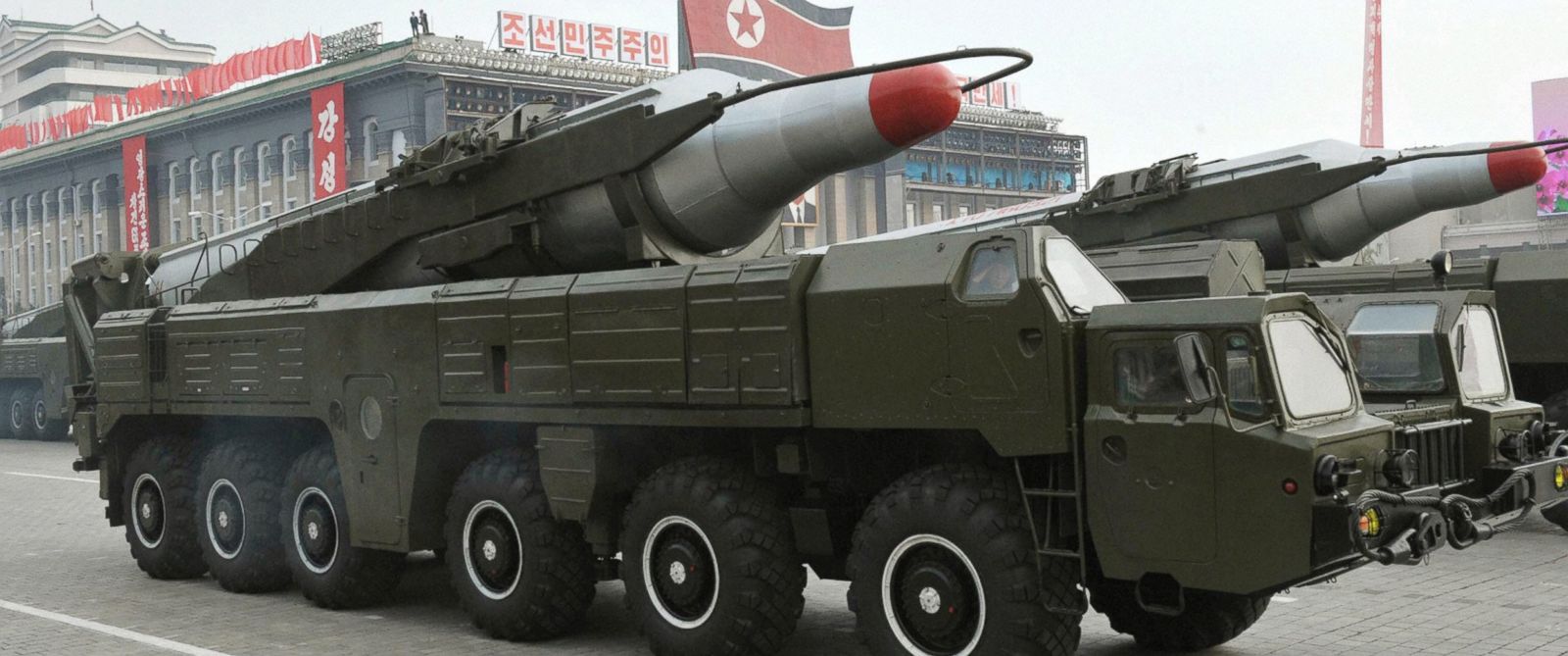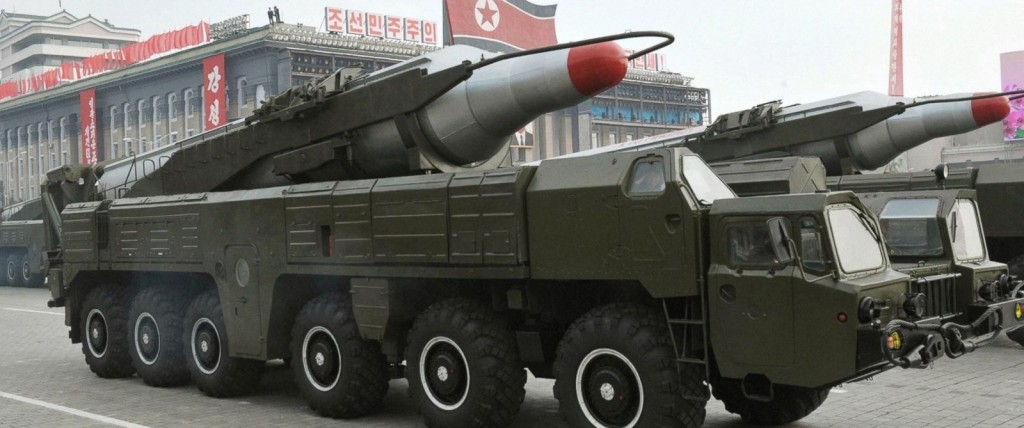Sourced : Freebeacon
BY: Bill Gertz
North Korea’s first attempt to test-launch a new intermediate-range missile last week failed after the Musudan blew up shortly after launch, causing a huge fireball that damaged the mobile launcher, according to American defense officials.
“We’re still assessing the specifics of it but I can tell you that it was a fiery, catastrophic attempt at a launch,” Pentagon spokesman Navy Capt. Jeff Davis told reporters Friday. “It was not successful.”
The test failure on Friday represents a setback for North Korea’s largely untested long-range nuclear missile forces that include launch pad-based Taepodong-2 missiles, and two road-mobile systems, the KN-08 and Musudan. The Pentagon last month also confirmed that a newer long-range mobile missile, the KN-14, was unveiled during a recent military parade. North Korea also is developing submarine-launched nuclear missiles.
U.S. strategic defense surveillance systems, both airborne and space-based, closely monitored the Musudan test and videotaped the explosion during the attempted launch from a beach on North Korea’s east coast.
In addition to damaging the launcher, the explosion may have injured or killed North Korean missile technicians near the site.
Two road-mobile Musudan launchers were set up for the test, but the second was not fired after the explosion, officials familiar with reports of the launch said.
The missile is estimated to have a range of up to 2,500 miles, enough to hit the western Pacific island of Guam, a key strategic military base in the Pentagon’s new pivot to Asia.
Army Gen. Vincent K. Brooks, nominee for commander of U.S. Forces Korea, told the Senate Armed Services Committee on Tuesday that the North Korean missile program is advancing despite testing and other problems.
Asked by Committee Chairman Sen. John McCain (R., Ariz.) about North Korea’s intercontinental ballistic missile program, Brooks said: “At the present time, Senator, I think that they’re struggling with getting the program up and operational.”
“But it’s very clear through the parades that they’ve done, what systems they have and some of the attempted launches that they have not had success in, over time, I believe we’re going to see them acquire these capabilities if they’re not stopped,” the four-star general said.
One diplomatic source familiar with reports of the test failure said the likely cause of the explosion, which occurred within five to six seconds after launch, was a faulty fuel system or turbo pump failure.
The Musudan intermediate-range ballistic missile is an indigenous variant of the Russian SS-N-6 submarine-launched ballistic missile, known by Moscow as the R-27, that the North obtained covertly from Russia sometime in the 1990s.
The missile blew up about 300 feet above the ground.
“The North Koreans seemed to just believe it would succeed because the R-27 SLBM of former Soviet Union was one of the most tested nuclear warhead delivery systems ever produced, and North Korea had already done a lot of ground tests,” the source said. “However, a real launching test is totally different from the ground test.”
Western intelligence agencies do not know the ultimate cause of the launch failure. “And the North Koreans probably don’t either,” the source said.
Brooks, the likely next commander of U.S. Forces Korea is currently commander of U.S. Army Forces Pacific.
In his written statement to the committee, Brooks disclosed that the threat posed by North Korea under its current leader Kim Jong Un is increasing.
“Kim Jong Un’s assumption of power following his father’s death in December 2011 has led to a more aggressive and unpredictable North Korea,” Brooks stated. “He exercises complete dominion over his subordinates in a humiliating and brutal fashion including purges, public demotions and re-promotions of military leaders, and brutal public executions.”
According to Brooks, the North Korean missile arsenal includes several hundred short-range Toksa and Scuds and medium-range Nodongs.
“The developmental IRBM, Musudan, though untested and potentially unreliable as a weapon, could also be launched at targets in the region,” he stated, adding that the KN-08 “is capable of targeting the U.S.”
The test in February of a Taepodong-2 space launcher “significantly contributes to North Korea’s long-range ballistic missile development, since they have many shared technologies,” he said.
North Korea has also been developing a submarine-launched ballistic missile since at least May 2015. The new SLBM “highlights its commitment to diversifying its missile forces and nuclear delivery options, while strengthening missile force survivability,” Brooks said. “If this system becomes operational, it will have a security impact to the Pacific region.”
Last week, Adm. Bill Gortney, commander of the U.S. Northern Command, told a House hearing that the U.S. intelligence community assesses a “low probability” North Korea can deploy a successful road-mobile missile with a nuclear warhead capable of reaching the United States.
“As the commander accountable for defending the homeland, I choose to assess that he does have that capability,” Gortney said. “And I think it’s the prudent course of action; it’s what I think the American people would like me to base my readiness assessment on to be prepared to engage it.”
Gortney, who is in charge of ground-based interceptors in Alaska and California, said his forces are ready to engage any North Korean missiles fired toward the country.
North Korea has not tested the “end-to-end” long-range missile capability, although the space launcher placed a satellite in orbit, Gortney told the House Armed Services subcommittee on strategic forces.
“But the re-entry vehicle that needs to go with it, the solid rocket metal fuel, we need to see that end-to-end test,” Gortney said Thursday. “But I’m not waiting for that end-to-end test on my assessment.”
The Musudan and KN-08 also posed greater threats because of the road mobility.
“Previously, when North Korea assembles a rocket, we have intel that we can detect through all forms of intel,” Gortney said. “Whenever you get into a road-mobile target, it’s very, very difficult to be able to track, quickly set up, and shoot. Most of my career I dropped bombs for a living and mobile targets are what always cause me to pause. And that’s exactly why this is a tough challenge for us.”
During the Senate hearing Tuesday, Brooks said he was “very concerned” by reports of joint missile development cooperation between North Korea and Iran.
The military’s plan to counter North Korean missiles is under development and called the “4D Strategy” for detect, defend, disrupt, and destroy North Korean missile threats.
Brooks said the Army’s advanced missile defense system, Terminal High-Altitude Area Defense, or THAAD, is needed in South Korea, and talks have been underway for deployment.
Under pressure from China, South Korea delayed deploying the system until February when the North Koreans conducted a Taepodong-2 flight test.
North Korea also is continuing to build nuclear weapons and has conducted four underground tests, in 2006, 2009, 2013, and in January.
South Korean news reports this week stated that increased vehicular traffic at a North Korean nuclear test site indicated another nuclear test blast is being readied.
“It’s my opinion that North Korea is moving in the wrong direction and the changes that we’ve seen are all provocative and more dangerous,” Brooks said during the hearing, noting North Korea’s “willingness to draw blood, to sink vessels, to fire some of their numerous artillery systems into population areas, to put land mines outside of Republic of Korea camps.”


